|
Gray Jay, Canada Jay, Whisky-Jack, Camp Robber |
|
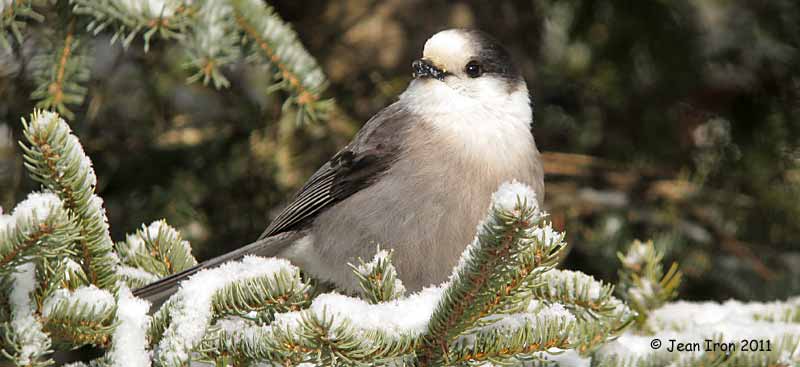 |
|
The Gray or Canada Jay, Perisoreus canadensis, is one of the few birds named
after Canada. It is our choice for a national bird. It is found year
round in all 10 provinces and all 3 Canadian territories. |
|
|
|
 |
|
Ron Pittaway and Canada Jay near Minden,
Ontario, southwest of Algonquin Park on 5 January
2011. We have seen Gray Jays at this location in previous years, so
Ron made loud squealing sounds like a wounded rabbit. Within half a
minute we heard chattering as two Gray Jays floated towards us. |
|
|
|
 |
|
Gray Jays spend a considerable part of
their day perched quietly, which conserves energy. Mated pairs are
non-migratory and occupy territories about 1/4 square mile in size. A
pair has used this territory near Minden for more than 30 years.
|
|
|
|
 |
|
Gray Jays are keyed to habitats with a
high proportion of spruce as in this photo. They are not normally found in forests
where the percentage of spruce is low even if other conifers such as
balsam fir, hemlock, white cedar and pines are abundant. Gray Jays
avoid habitats with a high proportion of hardwood
trees. |
|
|
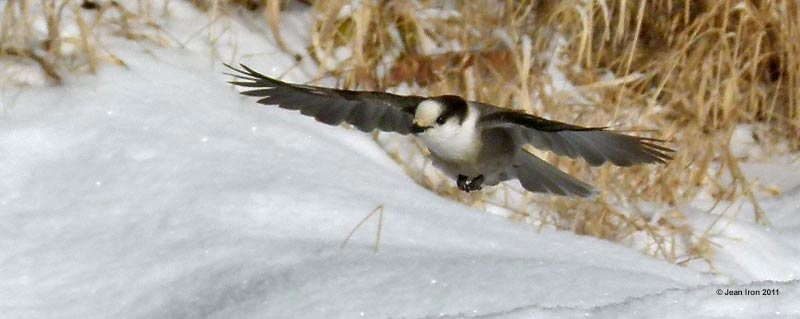 |
|
Their distinctive slow glide helps to
identify Gray Jays. We put out bread and they took away pieces to
store. They returned again and again. We spent over an
hour enjoying their company in quiet north woods. |
|
|
|
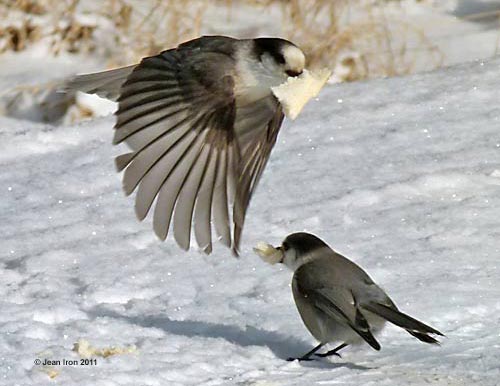 |
|
Stored food allows Gray Jays to hold
year round territories. They begin nesting in February when the snow is still deep and raise their young on
stored food. Most other birds time nesting when food for their
young is most abundant, but not the Gray Jay. Why? By hatching so
early, young Gray Jays get a head start to store food for the next winter
and repeat the cycle of early nesting. Much of the information in
these captions we learned from our friend, Dan Strickland, who
is the world's authority on Gray Jays. Dan continues his long-term
study in Algonquin Park and discovers new information every year. |
|
|
|
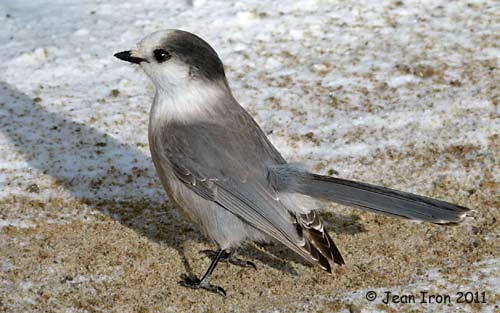 |
|
There are usually three birds on a
territory, comprising the mated pair and the dominant young bird
from the last nesting. We saw only two individuals, so after
watching them for an hour we are confident there wasn't a third bird.
Sometimes a Blue Jay will spend the winter associated with Gray Jays. Such Blue Jays are known as "Satellite Jays"
and eat some of the Gray Jay's stored food. |
|
|
|
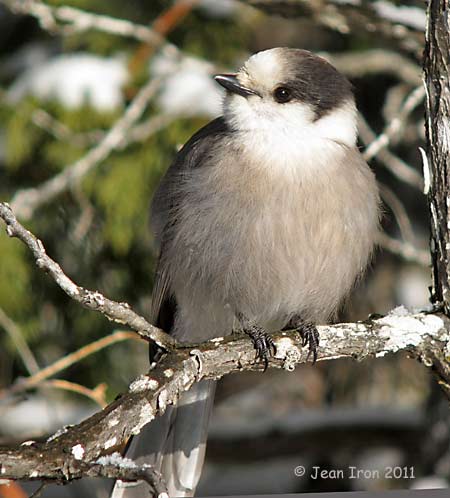 |
|
One of the best places in North America
to see Gray Jays in winter is Algonquin Park, which is about 3.5
hours north of Toronto. Many of the Algonquin Gray Jays will eat out
of your hand. Bring bread, raisins, cheese and other soft foods.
They don't like seeds. |
|
|
|
Link to
Gray Jays in Algonquin Park in 2009 |
|
|
|
|